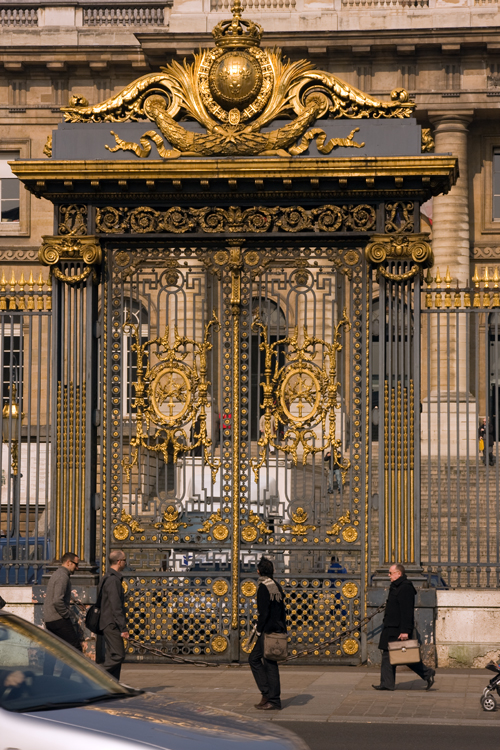
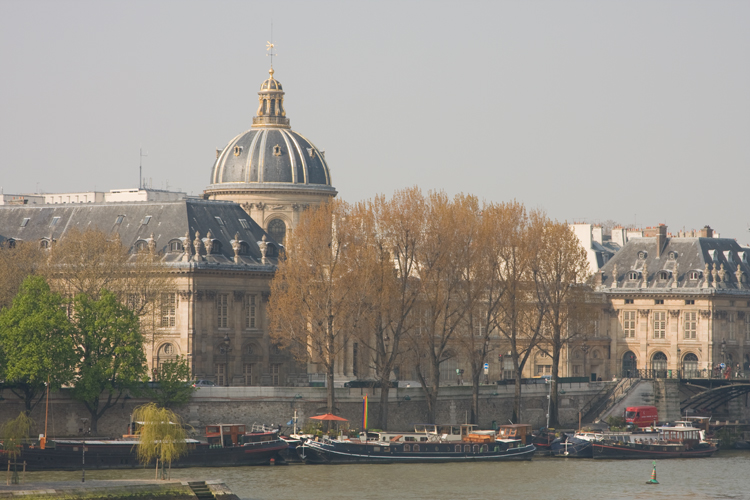
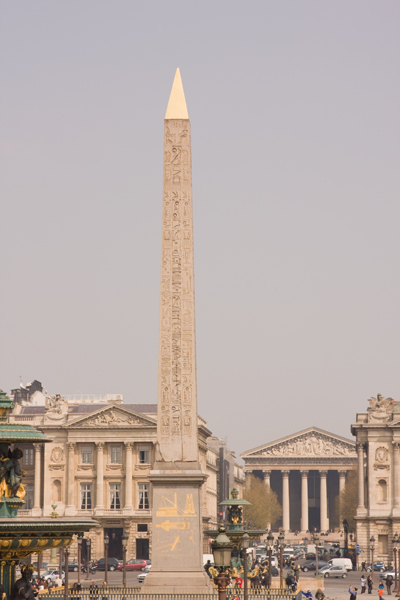
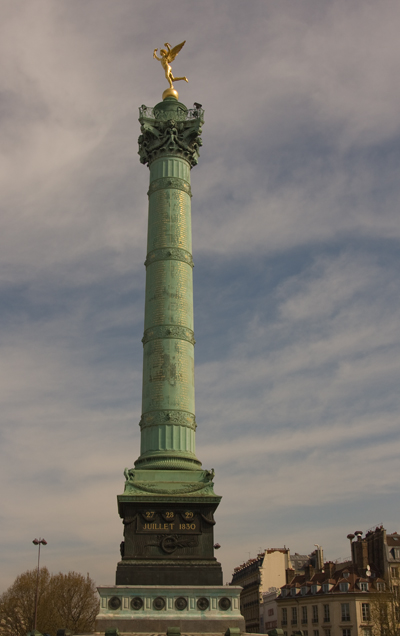
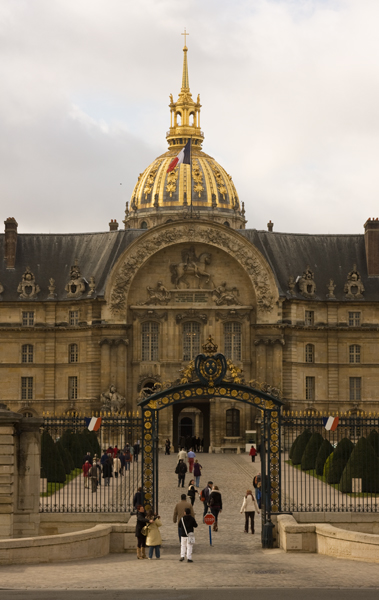
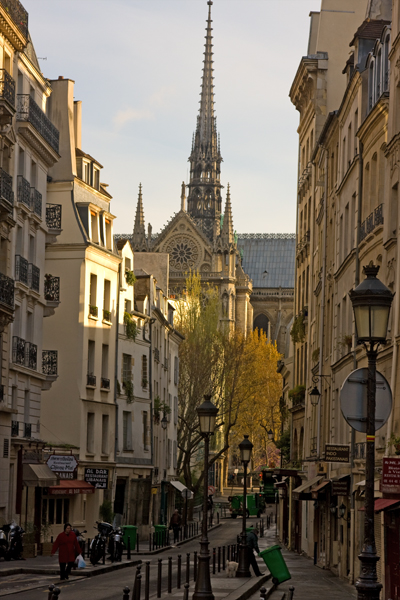
I've seen several homeless people here, not so different from home. But what I also see maes me wonder a bit about the costs associated with preserving history. Almost everywhere I look, there is gold. Not just specks of it, but lavishly large amounts. There are gold lions guarding bridges, gold-touched gates guarding palaces, golden domes atop basilicas and infirmaries. On the few ocassions that the sun has shone, the gold is astonishingly lovely, a welcome contrast to the masses of gray-toned stone, almost as if the sun has landed on top of the roof, and is burnishing it while burning its image into one's retina.
| Gates of the Palais de Justice, across the park from the Seine |  |
| Fine Arts School, a bit aross the Seine from the Louvre Museum |  |
| This is the largest public square in Paris, built in the middle 1700s. During the Revolution, what had been a statue of a king was torn down, replaced by a guillotine that was then used to behead more than 1,300 people. I guess the obelisk is better, although it isn't very pretty. |  |
| The Colonne de Juillett is in the Place de la Bastille and marks the site of a prison where people were executed. It was stormed by a bunch of people at the beginning of the French Revolution. |  |
| Les Invalides was built in the 1670s to take care of aging soldiers. It is still home to some, including the dead Napoleon. The building also houses the Army museum. The gold dome is not atop the building, but rather is part of the Church of St-Louis des Invalides and was added after Les Invalides was built. |  |
| The Cathedrale Notre Dame de Paris has no gold. It simply doesn't need it. |  |